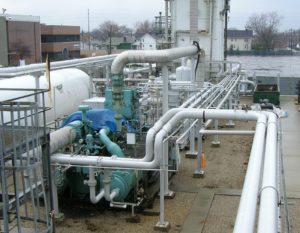Skip to content

About five years ago, when natural gas prices continued to linger at historic lows, I was one of many who predicted a quick return to the volatility once synonymous with the natural gas market.
Today’s unflappable, low-priced environment is in stark contrast to the Wild West exploration and production market of the past.
It was not unusual for natural gas prices to spike from $2 per million Btu (MMBtu) to $14 per MMBtu in a matter of months. Drilling rigs would be deployed en masse, supplies would slowly replenish and prices would drop. The boom-bust cycle would be repeated for several decades. Like the sunrise and sunset, it was a customary and familiar occurrence.
But this fundamental assumption about the natural gas market is no longer true. Turns out the generous estimates of recoverable gas supplies in the U.S., which were questioned by many skeptics, are more precise than we thought.
In the U.S., we no longer have to wage an extensive search for new supplies or deploy a fleet of drilling rigs to exploit them. Over the years, natural gas producers have tapped into immense natural gas resources that have long been trapped in a thin, nonporous rock known as shale. Bringing in more supply is as simple as turning on a spigot.
Thanks to new production methods, including hydraulic fracturing and horizontal drilling, natural gas production in the U.S. has fundamentally changed. Specifically, producers can ramp up gas production much more quickly in response to rising demand, which means we may have entered an era of long-term stability in the price of natural gas in the U.S.
According to a new study released last month by Resources for the Future (RFF), a think tank devoted to the research and analysis of natural resources, natural gas produced from unconventional resources such as shale are 2.7 times more responsive to changes in demand than conventional production. The reason is this: Unconventional wells produce significantly more gas at a consistent and faster flow rate. RFF researchers said production from these wells behaved more like a “manufacturing process.”
Today, natural gas produced from shale formations account for 50 percent of U.S. natural gas production, according to the Energy Information Administration (EIA). What’s more, natural gas production from shale is projected to rise over the next 24 years, accounting for nearly 70 percent of U.S. gas production by 2040.
This means the return on investments in gas-fired power generation will be greater versus the building booms of the past, when gas-fired plants built on the promise of low-cost fuel were shut down amid sharp spikes in the price of gas.
Power generation will account for 34 percent of the growth in natural gas consumption between 2015 and 2040, according EIA. During the 25-year period, natural gas consumption in the U.S will rise 1 percent a year, from 28 trillion cubic feet (Tcf) in 2015 to 34 Tcf in 2040.
Nearly 19,000 MW of power generation fueled with natural gas is expected to be built and commissioned in the U.S. between 2016 and 2018. Not surprisingly, much of that capacity (52 percent) is being built near shale formations.
According to data released earlier this month by the EIA, natural gas was by far the leading source of generation in the U.S. during the first half of 2016. Natural gas accounted for 33.5 percent of electricity produced through June while coal accounted for 28.1 percent.
What’s more, power produced with natural gas reached an all-time high in July. In EIA’s short-term energy outlook, the agency found that gas-fired power plants generated 4,950 gigawatt-hours of power each day in July, up 9 percent from the previous record high set in July 2015.
If you have any question, contact us at info@iesgengineering.com, follow us on twitter @iesgengineering or www.facebook.com/iesgengineering/
